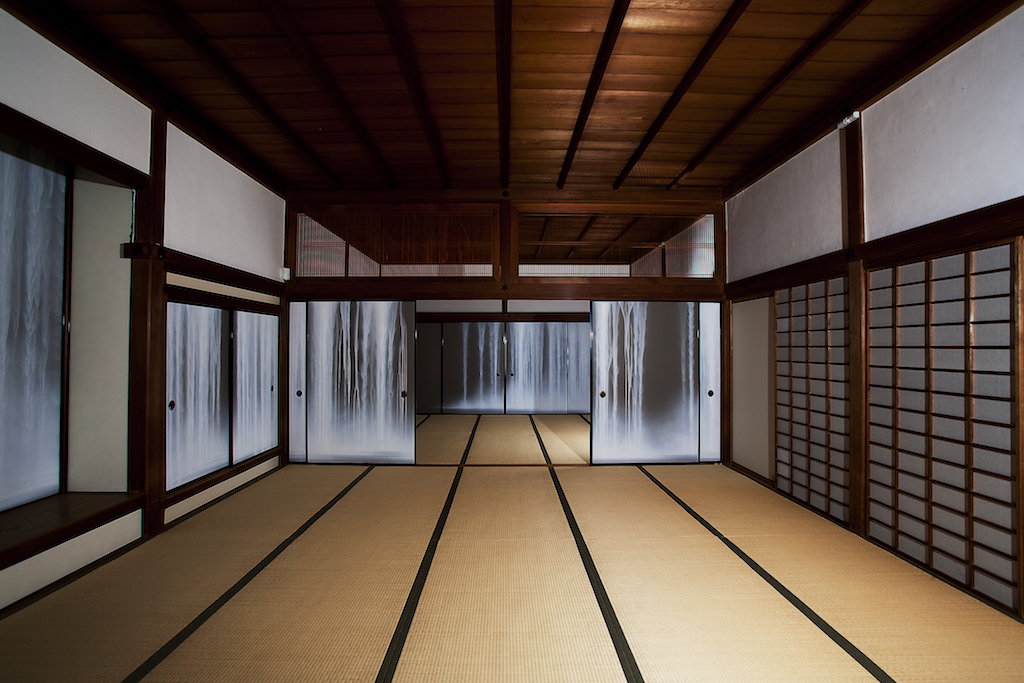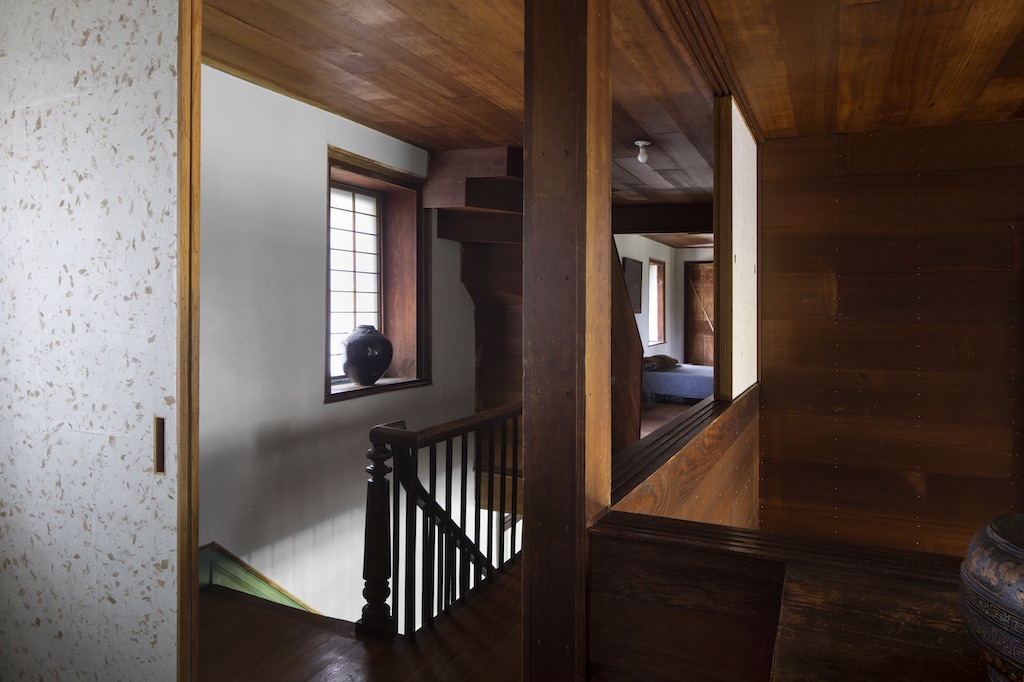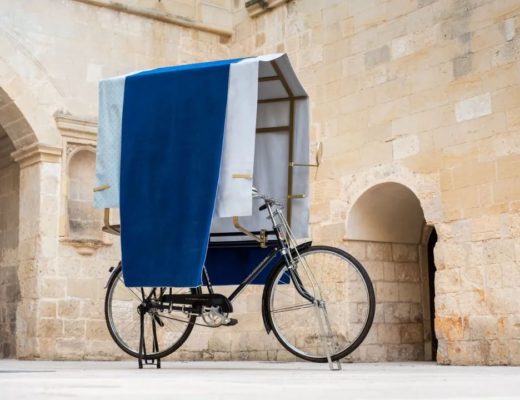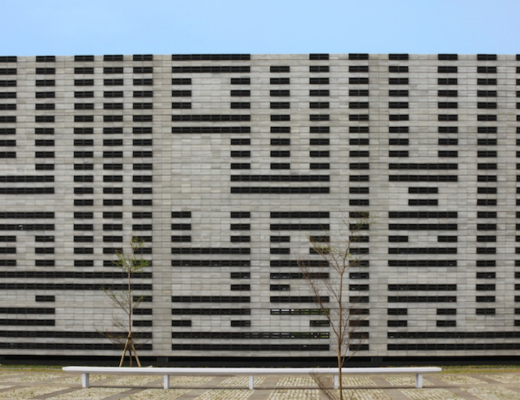Shofuso Japanese House and Garden, a 17th-century-style Japanese house and garden located in Philadelphia’s West Fairmount Park, has announced its major new exhibition Shofuso and Modernism: Mid-Century Collaboration between Japan and Philadelphia. The exhibition will be accessible both physically and digitally from September 2 to November 29, 2020 (in accordance with US Covid-19 guidance).
Organised by the Japan America Society of Greater Philadelphia (JASGP), a private non-profit organisation that promotes relations between Philadelphia and Japan through art, business, and culture – with support from The Pew Center for Arts & Heritage – the exhibition celebrates the friendships and transcultural exchanges between architect Junzo Yoshimura (1908 – 1997, Japan), woodworker George Nakashima (1905-1990, US), designer Noémi Pernessin Raymond (1889-1980, Swiss-French) and architect Antonin Raymond (1888 – 1976, Czech), through their collaborative architectural projects. The exhibition is curated by Yuka Yokoyama and guest curator William Whitaker.

Designed by the architect Junzo Yoshimura, Shofuso was constructed for the Museum of Modern Art in New York as the third installment of “The House in the Museum Garden” outdoor exhibition in 1954, before being moved to its permanent home in West Fairmount Park, Philadelphia. Shofuso provides an authentic re-creation of what is regarded as a definitive, and highly influential, movement in Japanese architecture. In Shofuso and Modernism: Mid-Century Collaboration between Japan and Philadelphia, the creative relationships which shaped and influenced the architect’s life are explored through archival images, objects, and artifacts from Yoshimura alongside Nakashima and the Raymonds.
Raymond’s drawing of Japanese carpenters (Shokunin) working at the Imperial Hotel in Tokyo in the 1920s, Yoshimura, Nakashima and the Raymonds’ architectural and design renderings from the 1930s, a toy chest Nakashima made for his daughter in the internment camp in Idaho in the 1940s, a series of archival documents from the original exhibition at MOMA and photographs from the family archive, are presented in a comprehensive online exhibition, alongside virtual tours of George Nakashima Woodworkers (New Hope, PA), Raymond Farm Centre for Living Arts and Design (New Hope, PA), and Shofuso itself.
Displayed within Shofuso is Noemi’s signature textiles – inspired by Japanese and American landscapes and culture – a table Nakashima made in the milk house at the Raymond Farm shortly after moving to New Hope from an internment camp and other collaboratively designed pieces such as chairs and lamps. Outside, traditional Japanese garden elements – based on Shokunin gardener Tansei Sano’s original plan for the West Fairmount Park site – express the harmonious cohabitation of nature and domesticity.
Prior to the construction of Shofuso, Yoshimura, Nakashima, and the Raymonds worked in Tokyo at Raymonds’ architectural firm, realising many of the now historic building projects of the Japanese landscape. The Raymonds then returned to the United States in 1938, followed by Yoshimura, where they worked together in New Hope, PA until 1941. The following year, as a result of the Japanese involvement in World War II, George Nakashima’s family was deported from Seattle, Washington.
DE51GN speaks to curator Yuka Yokoyama about the exhibition and the profound influence of Japanese architecture movement Shofuso on American Modernism.
First, how has the ongoing pandemic impacted your curatorial thought process since museums and galleries are now going virtual with their exhibitions?
The pandemic impacted our project in many ways. The most valuable part of “exhibition” is a physical experience. Nothing can replace that. The Shofuso and Modernism exhibition is now a hybrid onsite/online exhibition, We are presenting three architectural sites and Junzo Yoshimura, Geroge Nakashima, Antonin and Noemi Raymond’s shared design principles and vision. The bus tours of the three sites are cancelled, but we added a website component with photographs, 360-degree videos to introduce the architecture of Shofuso, Nakashima Woodworkers and Raymond Farm. For the onsite exhibition, we have images of the three sites on the screen, and selected objects and furniture displayed in the tatami room at Shofuso while the audiences have access to exhibition information through our website on a phone as well as while you are at home. Shofuso is now open to the public with social distancing requirements.
What are the commonalities between Shofuso and Mid-Century Modernism? How would you describe the alliance between the two?
The 1954 exhibition press statement describes this relationship: “The Museum of Modern Art has selected an example of traditional Japanese building for this exhibition because classic Japanese architectural forms have long been regarded by many Western architects as being of greater relevance to contemporary problems than much of the Western tradition itself. The Museum of Modern Art selected an example of Japanese architecture, based on 16th- and 17th-century prototypes, as its third House in the Garden because of the unique relevance of traditional Japanese design to modern Western architecture.
Arthur Drexler, the curator of architecture and design, points out in a leaflet that Museum has published for visitors to the exhibition that “the four important characteristics which give Japanese architecture this relevance are post and lintel frame construction, flexible room arrangements, relation of indoor and outdoor areas, and the ornamental quality of the structural system itself.”
How has Japanese minimalism informed the Mid-Century Modernist movement? What aspects would you say render it timeless?
Modern Western practice, with its general use of the steel skeleton frame, has developed many effects known to Japanese architecture since the eighth century. For example, walls which do not support a roof, but are instead hung like curtains on the structural framework, are today a commonplace of Western architecture. Before 1900, Frank Lloyd Wright made fundamental to his work the Japanese respect for the beauty of natural materials, as well as the massive, hovering, insistently horizontal roofs essential to the Japanese conception of a house. The 20th-century taste for open interiors and plain surfaces, as in the work of Le Corbusier and Mies van der Rohe, are other characteristically Japanese ideas which we have begun to develop in our own way.
Could you cite any examples of architecture in America that closely correspond with the Shofuso style?
There is no other architecture like Shofuso as 16th-century Shoin-style architecture with a viewing garden in the US, but Yoshimura designed Japan Society building as well as a tea house and private residence for the Rockefeller in New York.
Of course, as a part of this exhibition, we are focusing on the influence of Japanese architecture at the Nakashima studios and residence, as well as Raymond Farmhouse in New Hope.
Did the Japanese masters such as George Nakashima embrace any American influences during the course of their work? If yes, please provide specific attributes.
George Nakashima was a Japanese American architect educated at MIT. After graduating from MIT in 1931, George travelled around and eventually arrived in Japan and started working for Antonin and Noemi Raymond’s architecture office in Tokyo in the early ’30s (this is when George met Junzo Yoshimura) until the Second World War began, and returned to Seattle. But soon after the return, the Nakashima family was forced to relocate and incarcerated at Minidoka internment camp in Idaho. The Raymonds released the Nakashima family and relocated them to Raymond’s Farm in New Hope. “American influences” for Nakashima is a very complicated and interesting question. He worked for an American Architect in Japan as a Japanese American, also spent some time in India for a project while working for Raymond as a young architect. After settling in New Hope and establishing Nakashima Woodworkers, George was close friends with Ben Shahn from Roosevelt NJ, and Wharton Esherick from Valley Forge Mountain in Chester County, Pennsylvania. They were both influential artists from the area.
Photos: Courtesy of the Japan America Society of Greater Philadelphia
You might also like:
Pritzker Laureate Balkrishna Doshi retrospective to go on display outside of Asia for the first time








